#Birdwing Butterfly
Text
showing my face so i can tease the archfey trench coat a little more ✨
the ephemera jacket limited presale will be on july 13th, 1 pm est!
#botanical#artist brand#nature fashion#illustrator on tumblr#indie fashion#birdwing butterfly#butterfly
902 notes
·
View notes
Text




Bug fair 2024 at the Natural History Museum was a blast! Here’s some specimens and pets I got. I forgot to take photos and only took videos, so these are stills from a video—sorry for the poor quality!
#Beau bug talks#personal#beaus bug biome#insects#entomology#bugs#insect#bug#nature#bugblr#insectblr#beetle#coleoptera#beetles#lepidoptera#butterfly#birdwing butterfly#specimens#insect specimens#stick bugs#stick bug#phasmid
85 notes
·
View notes
Text





Ornithoptera alexandrae
#ornithoptera alexandrae#queen alexandra's birdwing#birdwing butterfly#beadwork#this is the one that broke my hiatus#debated posting it for a long time bc it's rougher than the others
45 notes
·
View notes
Text

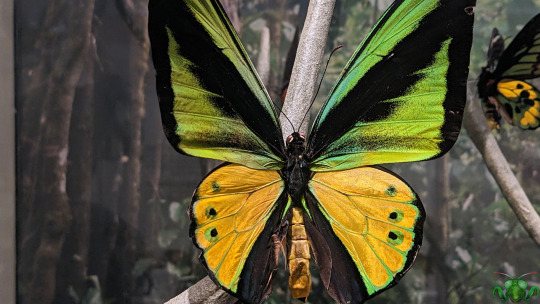
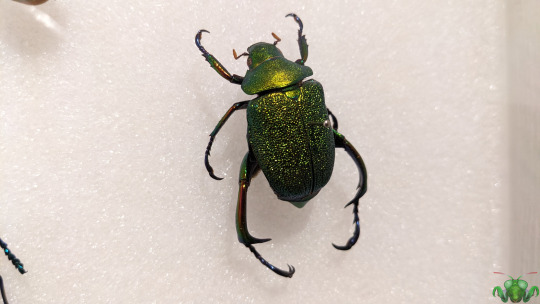


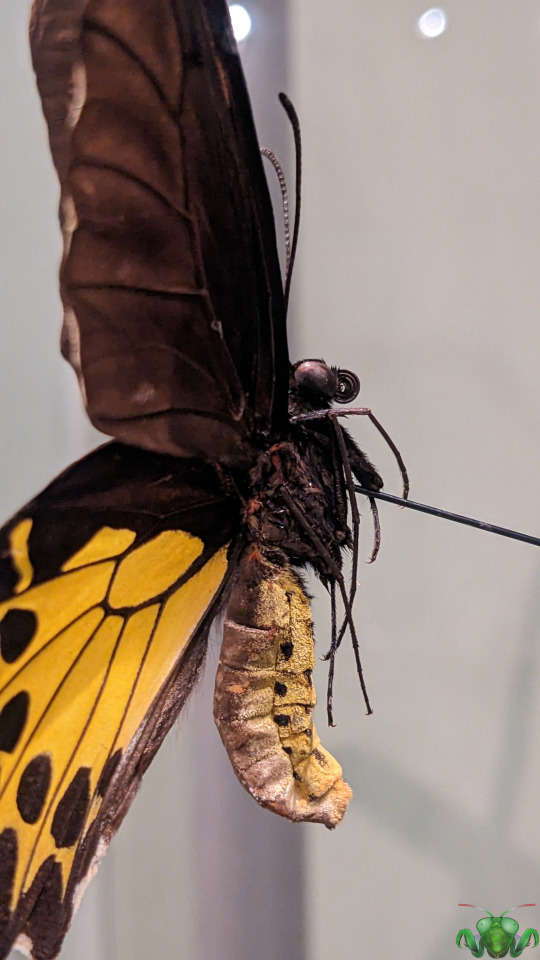



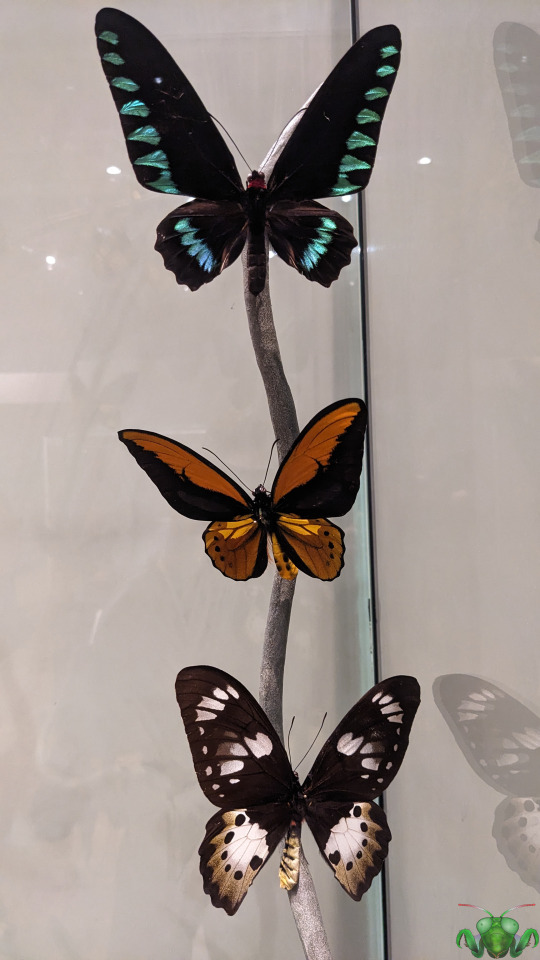
Royal Ontario Museum - Insect Exhibits 2
Good news, I managed to squeeze in one more insect visit to the Royal Ontario Museum before the end of the year! As such the living denizens of the natural history section will be showcased one more time before 2024 is upon us. Before that, I'd like to take a moment to share new pictures from the insect displays within the natural history section. Compared to the pictures from 2019, these are a quantum leap forward in terms of clarity and use of lighting. The Peanut Bug - Fulgora laternaria (Picture 1) has always been a favorite of mine, so I always take the opportunity to go and visit it and marvel at the ridiculousness of the size of that head protuberance. Though a bit oversized, such a head fixature has an important function: knocking it against a tree is its mating call. If the attention they draw is unwelcome, they can startle their voyeurs with the eyeball spots on its wings. These markings are more prominent in live specimens; this pinned specimen's colors have faded away over time. You can even compare the images from 2019 and you'll see a difference in color saturation. Otherwise, when this Hemipteran is at rest, it looks similar to a helmeted Cicada with more opaque wings. In terms of relations however, the Peanut Bug is more closely related to the Spotted Lanternfly of Asia, as they are both part of the family Fulgoridae.
I'm also particularly fond of the texture of the Shining Leaf Beetle's (Picture 3 - Chrysophora chrysochlora) ornate emerald shell, and the tropical colors of the Weevils on display. Especially the blue Eupholus specimens (Picture 9 - right side specimens). Finally, I also noticed a new section (to me) in the animal gallery featuring Butterflies of the tropics and I'm still amazed at how large they are. Many of these iridescent, vibrantly-colored specimens have wingspan sizes that can be as large as a hand! They are more appropriately known as Birdwing Butterflies and they are all giants compared to the Butterflies that grow in the temperate climate of Toronto! The specimens focused on here are the Green Goliath Birdwing (Ornithoptera goliath - Pictures 2, 5 and 6), the black-and-white female Priam's birdwing (Ornithoptera priamus - Picture 8), the male Palawan Birdwing (Trogonoptera trojana - Picture 10 top), Wallace's Golden Birdwing (Ornithoptera croesus - Picture 10 middle) and the female Paradise Birdwing (Ornithoptera paradisea - Picture 10 bottom), but there are many more in the background. To glimpse these in person is wonderful, but seeing them flying around in their tropical environments would be a magical experience!
Pictures were taken on December 19, 2023 with a Google Pixel 4. Please come and see the bugs if you can, both the living insect specimens and the many displays. You may go to this link and view a post from earlier: ROM - Insect Exhibits 1.
Since these insect collections belong to the ROM, I’ve marked them with the Mantis icon. As well, Happy first day of Winter (tomorrow)!

#jonny’s insect catalogue#insect#royal ontario museum#insect showcase#ROM insect#insect display#insect exhibit#pinned insects#lepidoptera#coleoptera#hemiptera#butterfly#birdwing butterfly#beetle#weevil#snout beetle#heteroptera#true bug#peanut bug#lanternfly#lantern fly#scarab beetle#toronto#december2023#2023#first day of winter#entomology#nature#invertebrates#arthropods
12 notes
·
View notes
Photo



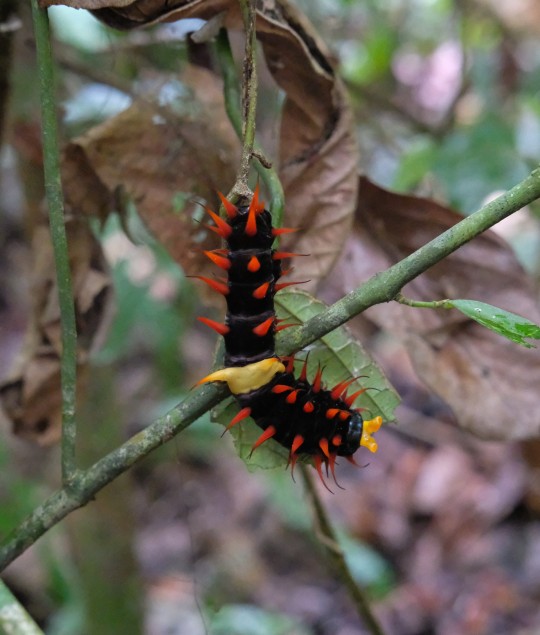
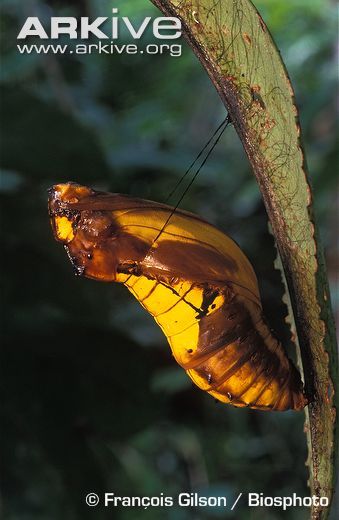

Queen Alexandra's birdwing is a species of butterfly in the genus Ornithoptera which is native to the forests of the Oro Province in eastern Papua New Guinea. The species was first described in 1906 by Albert Stewart Meek, a collector employed by Walter Rothschild to collect natural history specimens from New Guinea. In the next year, Rothschild named the species in honour of Alexandra of Denmark. Queen Alexandra’s birdwing is notable at being exceptionally hard to catch often flying several hundred feet in the air and resting in the branches of the jungle canopy. To overcome this difficult Meek resorted to taking the first specimens with aid of a small shotgun, however in the months to come Meek soon discovered the caterpillar forms and began to dutifly breed them in captivity. Female Queen Alexandra's birdwings are considerably larger than males with markedly rounder, broader wings reaching around 3 inches long, 12 grams in weight, and sporting a 9 to 11 inch wingspan, compared to males at around 1.5 inches long, 6 grams in weight, with a 6-8 inch wingspan. It is the largest butterfly species on earth. When the wings are open, the female butterflies display a brown coloration with white marks patterned in a pair of rows of chevrons in their primary wings, while the hindwings are also brown, but having submarginal lines of centered triangles in dull white to yellow. The males show an iridescent blue-green hue in both the primary and secondary wings along with a black band at the center. When the wings are closed, both the sexes display a fainter version of the dorsal sides along with darker veins. As caterpillars they have a black body with red tubercles all over, as well as a saddle or band of cream color at the center of their body and almost exclusively feed upon the Aristolochia schlecteri a species of toxic pipevine. It takes around six weeks for the insect to reach the stage of the chrysalis. The cocoon has a golden yellow to tan coloration with distinct black marks on the body. This stage lasts for about a month or sometimes a little more before the adults emerge. As adults Queen Alexandra’s birdwing feed on the nectar of a variety of flowers and are themselves occasionally preyed upon by birds and orb weaver spiders. During there brief 3 month life span as adults, this butterflys mate frequently, often every morning. With females being capable of laying over 240 eggs throughout there life.
#pleistocene#pliestocene pride#butterfly#butterflies#giant#queen#alexandra#bird#wing#birdwing#queen alexandra's birdwing#birdwing butterfly#bug#insect#moth#caterpillar
11 notes
·
View notes
Text
"Bird Wing Butterflies vs. Other Insects: What Makes Them Unique?"
Birds, butterflies, and other winged insects showcase nature's incredible diversity in flight adaptations. Each group has evolved unique wing structures and flying techniques suited to their particular needs and environments.

Buy now:19.95$
Bird wings are marvels of aerodynamic engineering. Composed of lightweight bones, muscles, and feathers, they provide both lift and propulsion. The shape and size of bird wings vary greatly across species, from the long, narrow wings of swifts built for speed to the broad wings of eagles designed for soaring. Feathers play a crucial role, with flight feathers providing the necessary airfoil shape and contour feathers smoothing airflow.
Butterfly wings, in contrast, are delicate membranes stretched over a framework of veins. Despite their fragility, these wings are remarkably efficient for the insect's size and lifestyle. The large surface area relative to body mass allows for slow, fluttering flight ideal for nectar gathering. Many butterfly species boast vibrant colors and intricate patterns on their wings, serving purposes from camouflage to mate attraction.

Buy now
Other flying insects exhibit an even wider array of wing types. Some, like dragonflies, have two pairs of wings that operate independently, allowing for incredible maneuverability. Beetles have hardened forewings called elytra that protect their more delicate flying wings when not in use.
The diversity of wing structures in nature demonstrates the power of evolutionary adaptation to solve the challenges of flight in myriad ways.
Entomology is the scientific study of insects, and moths form a fascinating subject within this field. Moths belong to the order Lepidoptera, alongside butterflies, but are generally nocturnal and have distinctive features.
Moths exhibit incredible diversity, with over 160,000 known species ranging from tiny micromoths to the impressive Atlas moth. Entomologists study their unique characteristics, such as feather-like antennae, wings held flat when at rest, and often muted colors for camouflage.

Buy now
These insects play crucial ecological roles as pollinators and food sources for various animals. Some moth species, like the silk moth, have significant economic importance. Entomologists also investigate moth behavior, life cycles, and adaptations to different environments.
Research on moths contributes to our understanding of biodiversity, evolution, and ecosystem dynamics. It also helps in pest management and conservation efforts for endangered moth species.
Butterfly-themed gifts offer a delightful way to celebrate the beauty and grace of these enchanting insects while appealing to ladies with a love for nature-inspired aesthetics. Popular options include:
Jewelry featuring butterfly motifs, such as pendants, earrings, or bracelets
Scarves or shawls with butterfly prints
Decorative items like butterfly-shaped wind chimes or garden ornaments
Stationery sets adorned with butterfly designs

Buy now
Butterfly-themed home decor, including throw pillows or wall art
Gardening accessories to attract real butterflies
Books about butterflies or butterfly-inspired poetry collections
These gifts combine elegance with a touch of whimsy, making them suitable for various occasions.
#birdwing butterfly#rare butterfly#exotic insect#butterfly specimen#insect collection#entomology moth#moth specimen#insect specimen#lepidoptera#moth collection#butterfly gifts#gifts for women#women's gifts#butterfly gift ideas#ladies gifts#View all AUTISM GIFTS products: https://zizzlez.com/trending-topics/hobbies/autism-spectrum-awareness-month/#All products of the store: https://zizzlez.com/
0 notes
Text
Birdwing butterfly character!

Birdwing butterflies are found in Australia, so I gave her a more outdoorsy look.
#Birdwing#birdwing butterfly#butterfly#character design#character drawing#hat#black women#black woman#long hair
0 notes
Text
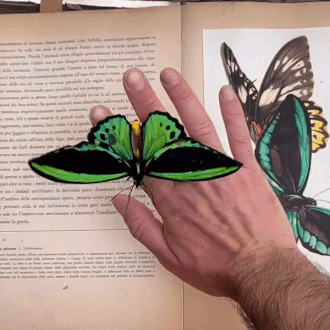

the common green birdwing (ornithoptera priamus) | source
#stim#butterflies#bugs#books#sfw#green#blue#white#black#yellow#brown#beige#wings#animals#insects#the common green birdwing#ornithoptera priamus#hands#ishy gifs#postish
9K notes
·
View notes
Text

WP06385 Rajah Brooke's Birdwing Butterfly (Trogonoptera brookiana) by a Malayan jungle stream.
1 note
·
View note
Text

The Queen Alexandra’s Birdwing the largest butterfly in the world
8K notes
·
View notes
Text


Rajah Brooke’s Birdwing Butterfly (Trogonoptera brookiana), male, family Papilionidae, Congkat Forest Reserve, Malaysia
The wingspan of this butterfly is 1up to 17 cm (6.7 in).
photograph by Michael Khor
552 notes
·
View notes
Photo
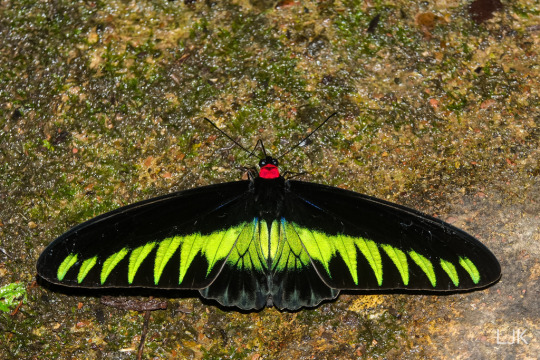







Rajah Brooke’s birdwing, Trogonoptera brookiana, Papilionidae
Found in Southeast Asia
Photo 1 by ljk1410, 2-5 by gancw1, 6 by jiri_hodecek, 7 by guybroome, and 8 (for scale) by adamardn
#animals#curators on tumblr#insects#bugs#butterfly#birdwing#rajah brookes birdwing#one nice bug#congregation
2K notes
·
View notes
Note

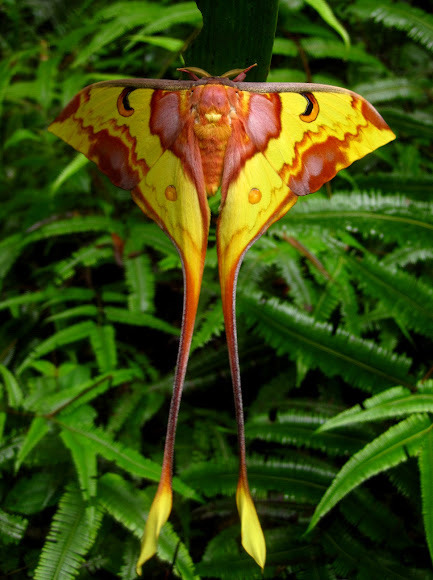

This is a Malaysian Moon Moth!
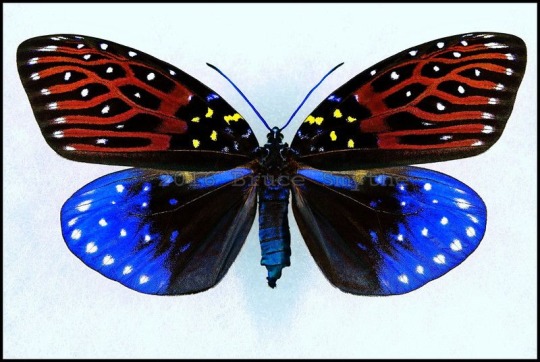


This is a Amesia sanguiflua! It is also in Malaysia! <3


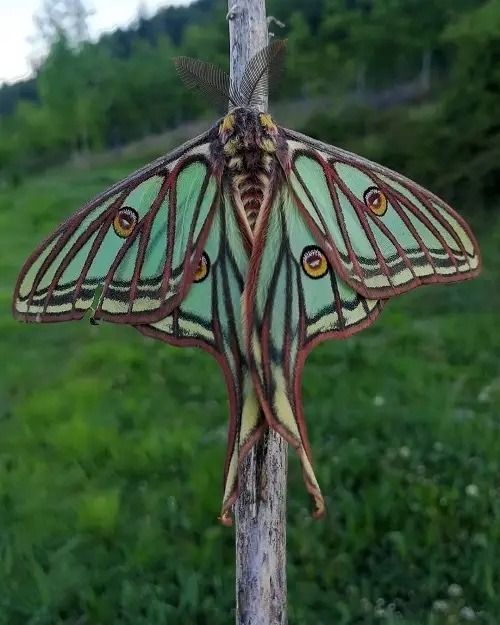

This is a Spanish Moon Moth!


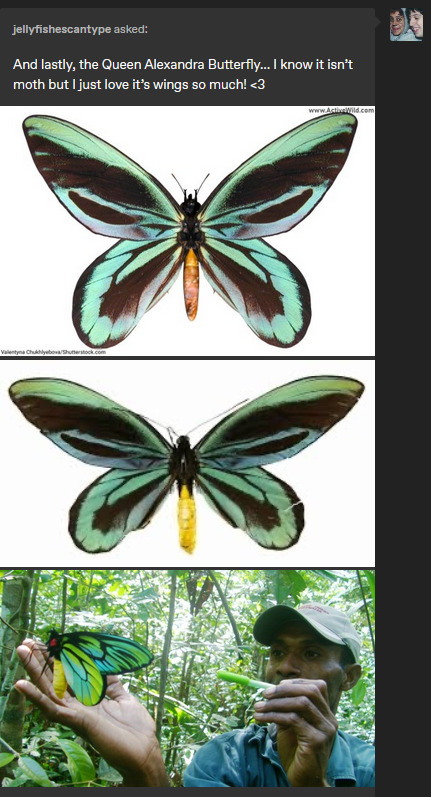
gorgeous stunning amazing beautiful i am In Love
#the spanish moon moth looks like stained glass omg.... slay queen#and the gloriosae! starry night vibes!#malaysia has some banger moths#i love all of these they're showstopping Thank You#delighted to only recognize the birdwing / alexandria butterfly. She's A Celebrity! I've Caught Her In Acnh!#i would love to hold all of these stunning guys#they must be so soft...#rambles from the bog#i will be saving these for inspiration!#some of my dragons would benefit Greatly!
166 notes
·
View notes
Text

24 notes
·
View notes
Text
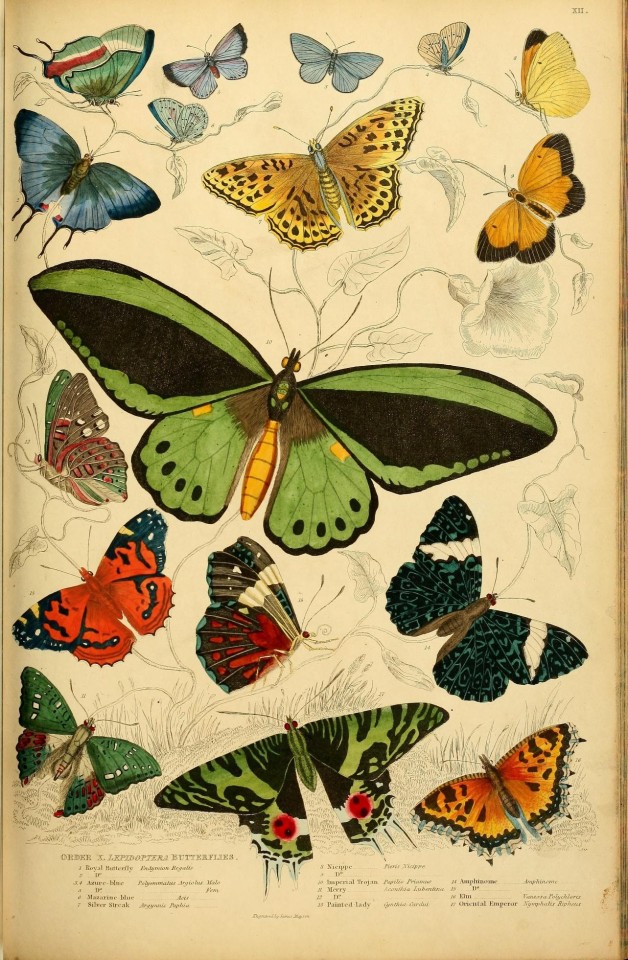
Lepidopterans from the Edinburgh Journal of Natural History and of the Physical Sciences, Vol. 1 (1835-1839).
"Lepidopterans" includes both moths and butterflies. The moth in the bottom middle is the lovely Madagascan sunset moth (Chrysiridia rhipheus), which was once classified as a butterfly. The butterfly in the middle is the male common green birdwing (Ornithoptera priamus). This species exhibits sexual dimorphism in which the female is larger than the male and has brown and white coloring.
#SciArt#moths#butterflies#lepidopterans#Natural history#entomology#lepidoptera#Madagascan sunset moth#green birdwing#butterfly#moth
632 notes
·
View notes
Text
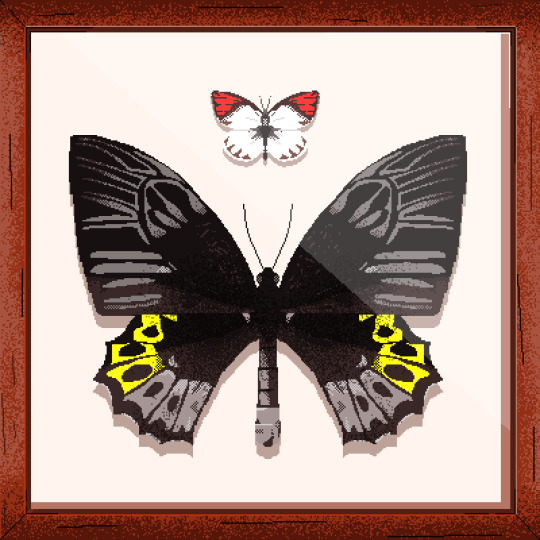
Meet this two unique butterflies Red Tip and Rippon's Birdwing! I hope you guys like it ^^
#butterfly#butterflies#butterflies🦋#pixel#pixelart#digitalart#art#insect#arthropod#bug#bugs#birdwing#RedTip#arthropods#insects#pixel art
28 notes
·
View notes